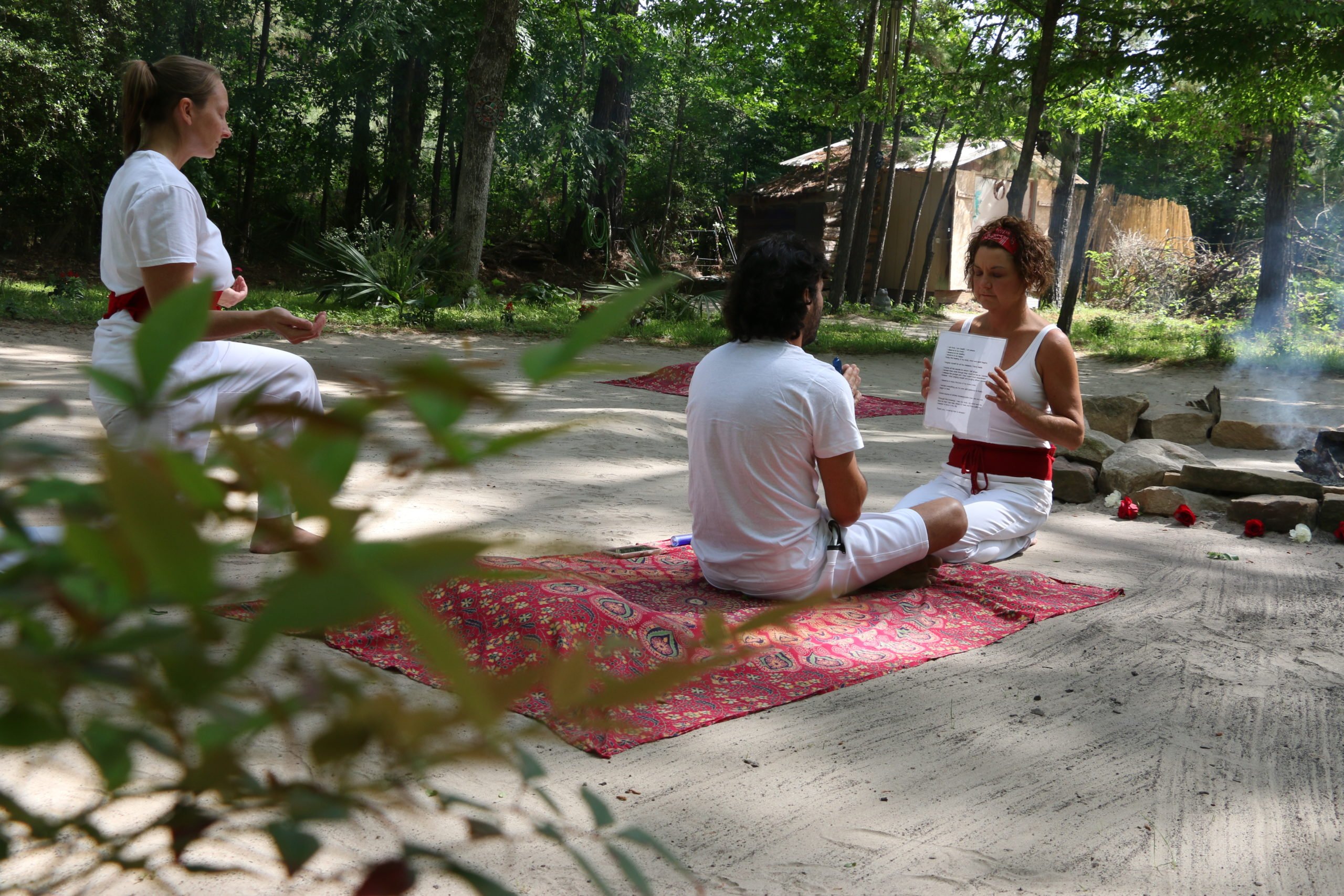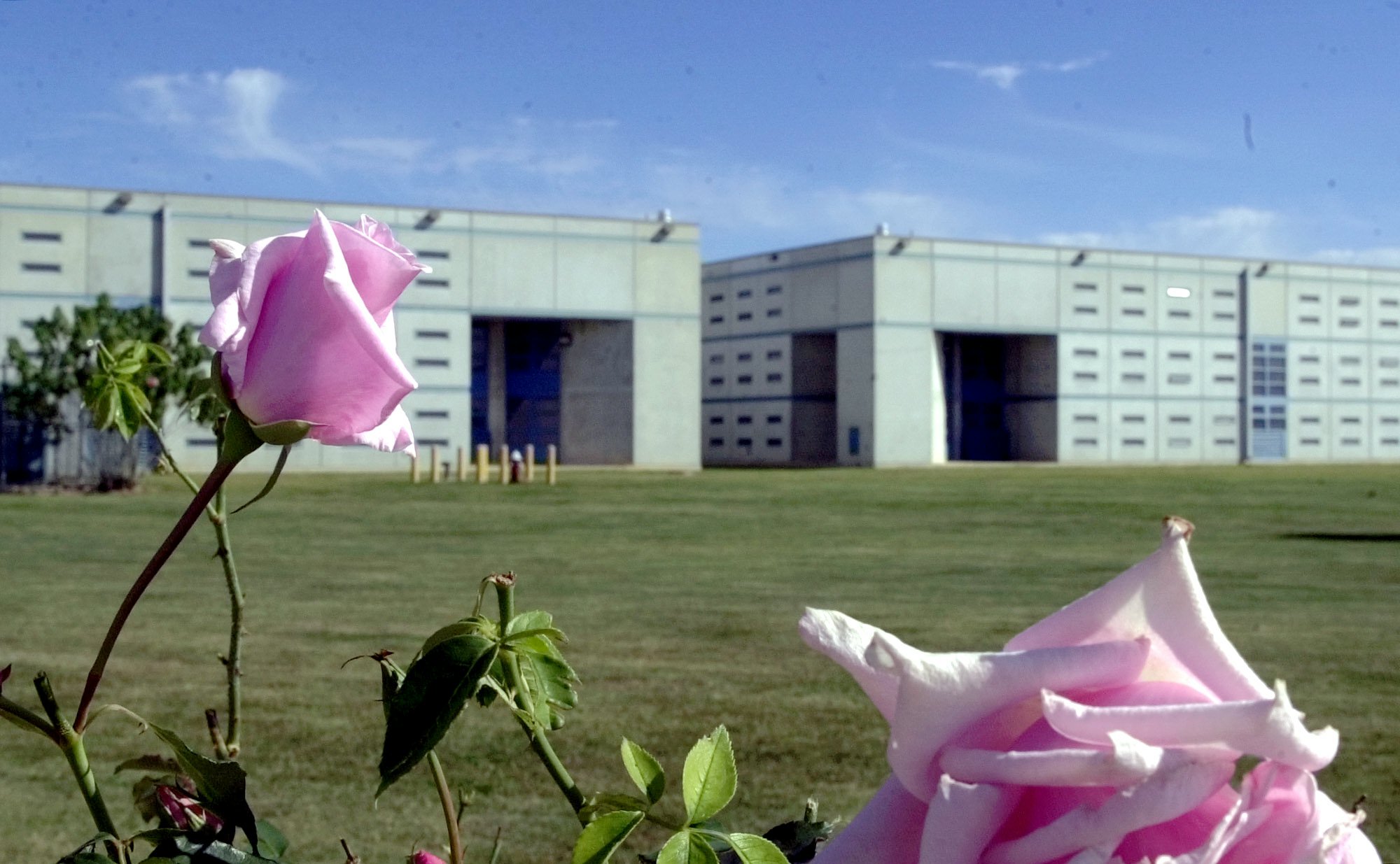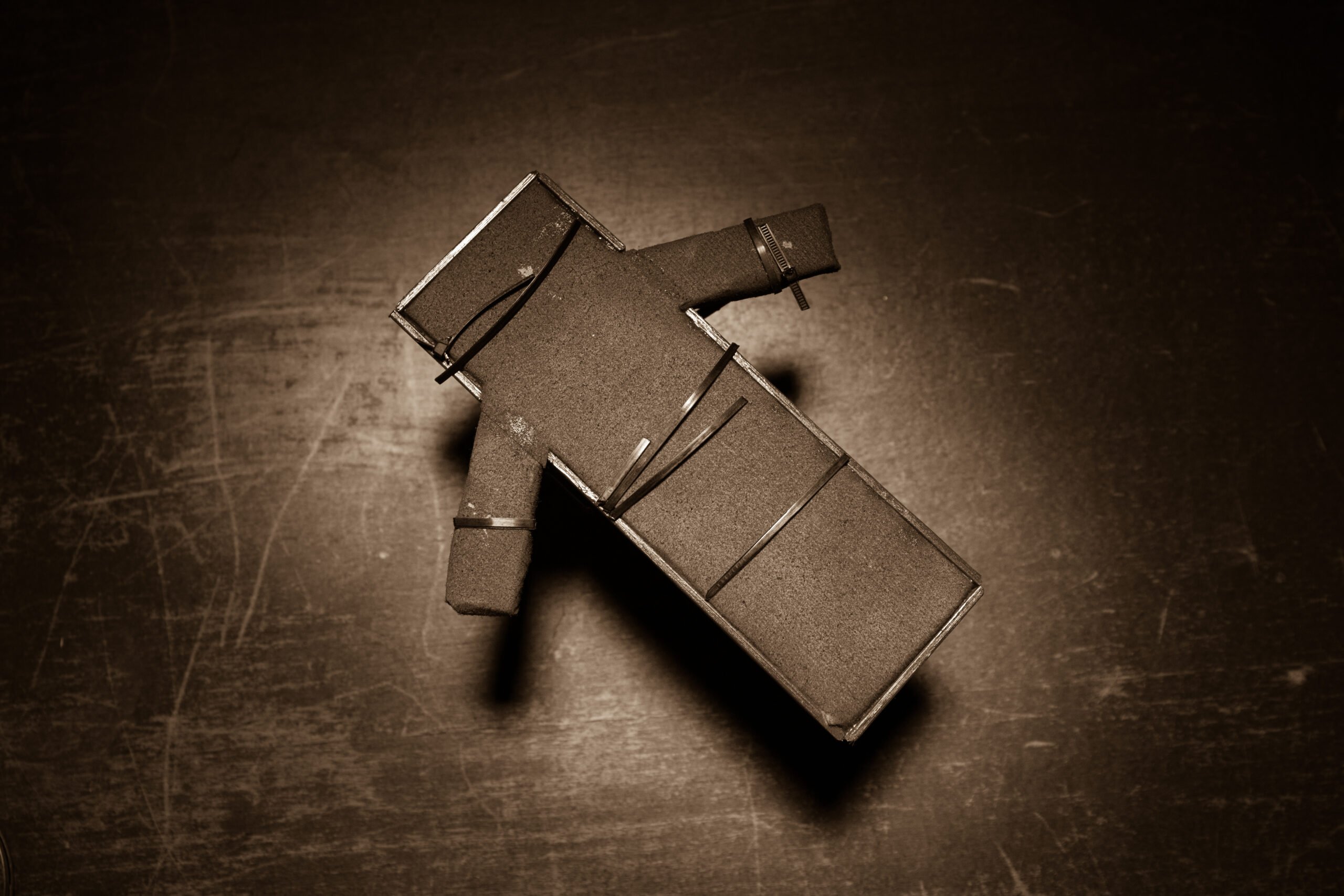Amid towering East Texas pines, smoke and New Age music drift from a sandy clearing where a circle of large rocks, along with freshly cut red roses and white carnations, surround a small fire. A card table draped with a red cloth serves as a makeshift altar at the clearing’s edge. Behind it, a Peruvian tapestry intricately embroidered with the striking image of a toad hangs from a tree.
In the middle of the space, a man dressed in white sits on a red blanket as Brooke Tarrer, also in white but wearing a red sash, guides him through the final stanzas of a prayer. “I wish to heal myself with all my heart and then help to heal others and thus fulfill my mission of love and communication in this life,” he repeats. “Thanks, Universe that is already! Aho!”
The 11 other people present at the ritual kneel in respect for the “medicine” he is about to receive. Those participating in the ceremony are spread out in a circle around the fire, while the people who are there to only watch sit in folding chairs in the grass off to the side.
Tarrer, leader of a group she calls the Universal Shamans of the New Tomorrow, holds a lighter under a glass vial at the end of a pipe. The white, dried toad poison inside begins to smoke, and the man inhales it deeply. She helps him lie down, extends his legs and brushes a fan made of condor feathers along his body. For about 20 minutes, the man remains nearly motionless, as he undergoes an intense psychedelic experience.
Meanwhile, Tarrer and four facilitators also dressed in white with red sashes, serve the powerful “sacrament” to three other people. One woman sobs uncontrollably for a few minutes. Another man writhes, heaves and drools in the sand for nearly half an hour. All emerge from their trance with hypnotic, euphoric smiles.
Then, suddenly, the ritual takes an unnerving turn as Tarrer shifts her attention to me.
A toad, a toxin and a trend
The Universal Shamans of the New Tomorrow is one of several self-proclaimed churches recently organized in Texas that administer a potent psychedelic called bufo, a poison secreted from a toad native to the Sonoran Desert. Founded in 2020, the church claims bufo can assist with mental health issues such as depression, anxiety, PTSD, and addiction. Although the medical community is starting to study the potential medicinal benefits of other psychedelics such as psilocybin (the active ingredient in hallucinogenic mushrooms), experts say little research has been done on the effects of bufo.
Tarrer calls bufo a sacrament and asserts it connects those who use it directly to God. However, critics say there is no record of bufo being used for psychedelic or religious purposes by indigenous peoples in the Sonoran Desert, and they warn that some practitioners may just be using it to rake in money.
“It’s extremely sacred,” said Tarrer, 42, a former school teacher, who lives in Houston and wouldn’t disclose what she does for a living.
“It’s literally connecting with the divine source within you that is God,” she said. “Once that’s experienced, I mean, it’s truly being back into oneness with everything, with yourself.”
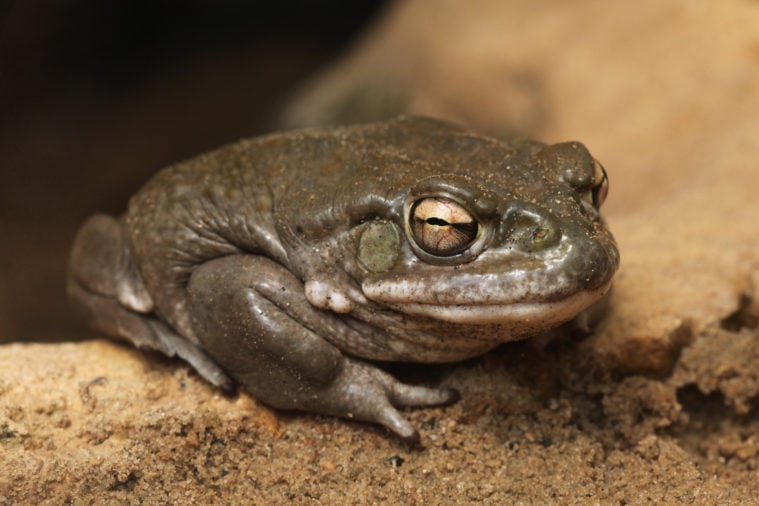
Entheogenic churches seem to be spreading rapidly in Texas. Ian Benouis, an Austin-based attorney, says he has helped organize dozens such “medicine churches,” which use bufo or other psychedelic substances such as ayahuasca or kambo. He explained that the state provides the best legal protection in the country for these types of churches because a 2021 amendment to the Texas Constitution prohibits the state or local government from limiting the services of religious organizations. An entheogen is a psychoactive substance, usually derived from a plant, that induces altered states of consciousness for religious or spiritual purposes. Many researchers prefer that term to psychedelic when referring to substances like bufo.
Bufo derives its name from the Colorado River toad, also known as the Sonoran Desert toad. Although commonly referred to by the scientific name Bufo alvarius, its correct name is Incilius alvarius. Native to northern Mexico and the southwestern United States, the toad hibernates for the hottest nine months of the year. It is the only animal known to produce a poison that contains 5-MeO-DMT, the so-called “God molecule,” widely considered to be the world’s most powerful psychedelic.
The introduction of the psychedelic properties of Colorado River toad poison in the United States likely had its roots in Texas. In 1983, a mysterious pamphlet called Bufo Alvarius: The Psychedelic Toad of the Sonoran Desert gave a detailed history of the toad, as well as instructions for extracting the poison from its parotoid glands and smoking it. The booklet was written by Alfred Most, a pseudonym for Denton-based artist and researcher Ken Nelson. Nelson revealed his identity in 2017 to the documentarian Hamilton Morris after he misidentified Alfred Most in an episode of his Vice docuseries Hamilton’s Pharmacopeia.
“I support sacred medicines, but I do not support Brooke.”
Critics also warn that organizations serving bufo that have strict hierarchical structures and no accountability create the conditions for vulnerable people to be taken advantage of. Because the drug is so powerful and scientific study of it is in its infancy, researchers say users should take it only in environments where they feel safe and have access to medical help, if needed. Questions about safety and other concerns have led some of those who joined Tarrer’s group to distance themselves from it. Students who studied to become bufo facilitators under her tutelage said promises to be trained in CPR were never fulfilled. Others, who witnessed Tarrer try to serve me bufo without my permission, called her behavior abusive.
All of the people I spoke to who severed their association with the Universal Shamans of the New Tomorrow do not reject the positive benefits of the drug itself.
“I support sacred medicines, but I do not support Brooke,” one former member of that church said.
Risks and benefits
Tarrer rejects the term “psychedelic” and prefers the word “medicine” when referring to bufo. She said she procures it directly from the Comcaac tribe, also known as the Seri tribe, an indigenous group native to the Mexican state of Sonora, but she declined to specify exactly from whom.
Most users ingest bufo by smoking it and often say their experience cannot be fully described with words. They report having profound mystical experiences that give them clarity and connection to the infinite nature of the universe.
“When you partake of this medicine, it takes you on a full outer-inner body experience,” said Elektra Moon, who leads the Southern Star Church of Love, which serves bufo in The Colony, a far-north suburb of Dallas. “You lose complete consciousness of your physical reality, and it takes you into the oneness of God. And in that, you come into the knowledge of the love of creation.”
After Sam Gray received bufo at a Universal Shamans of the New Tomorrow ceremony, the 65-year-old grandfather’s life completely changed, he said.
“The first time I had sex, when I was young, I spent two or three days just daydreaming about it,” said Gray, who lives in Cleveland, Texas, north of Houston. “Well, the same thing happened with this.”
Gray, who identifies as a Christian, was a victim of verbal, physical, and sexual abuse as a child. As a result, he has suffered from alcoholism for most of his life and tried dozens of times to quit drinking, he said.
“I didn’t have the slightest urge to drink alcohol,” said Gray, who claims to be sober eight months after his first bufo ceremony. “I felt joy. I felt a little scared. I thought, ‘OK, this can’t be true.’”
“I felt joy. I felt a little scared. I thought, ‘OK, this can’t be true.’”
Charles Grob, professor of psychiatry at the University of California, Los Angeles, has been studying and writing about the medical effects of psychedelics for over 30 years. He said little is known about the risks and benefits of bufo from a scientific perspective because there has been virtually no formal research on the toad secretion and very little on synthetic 5-MeO-DMT.
“There are numerous anecdotal accounts of individuals reporting that [bufo] had a sustained positive effect on ameliorating chronic anxiety, improving mood for individuals who are prone to depression, effectively treating people,” Grob said. However, these accounts haven’t been collected with rigorous scientific research methods.
Ingesting 5-MeO-DMT can raise blood pressure and heart rate, particularly at higher dosages, Grob said. More research on cardiovascular responses is needed to ensure people’s safety, he said, especially for individuals with underlying cardiovascular vulnerabilities.
To use bufo, “One would want to be in an environment where there’s a degree of safety, a sort of controllability aspect involved, so that the person doesn’t have an unpleasant or unhelpful experience,” said Greg Fonzo, co-director of the Center for Psychedelic Research and Therapy at Dell Medical School at the University of Texas. “When it’s smoked or inhaled, [as opposed to being swallowed], then the effects come on much more quickly and more intensely. That lends itself to people having potentially more of a difficult experience because it’s such a sudden shift in the state of consciousness.”
A small fraction of people report experiencing long-lasting anxiety after taking bufo, indicating there are potentially more severe side effects associated with it than with other psychedelics, Grob said.
“I evaluated one individual who had high levels of anxiety, panic, and felt he was in a persistent dissociative state for some time afterwards and could not function [normally],” Grob said.
“I evaluated one individual who had high levels of anxiety, panic, and felt he was in a persistent dissociative state.”
The field of psychedelic research emerged after the psychoactive effects of LSD were discovered in 1943 by Swiss pharmaceutical chemist Dr. Albert Hofmann. A period of scientific exploration of psychedelics flourished during the 1950s and early 1960s, leading scientists to begin studying other drugs, such as psilocybin and mescaline, the psychoactive compound found in the peyote cactus.
Despite the promising initial results that these drugs had therapeutic benefits, severe restrictions were placed on psychedelic research for medical purposes by the U.S. government. In 1970, President Nixon signed the Controlled Substances Act, making LSD and psilocybin a Schedule I drug.
Advances in science and changes in politics have reignited interest in studying psychedelics. With special permission from the FDA to study drugs that treat serious or life-threatening conditions, clinical researchers in the United States are testing the potential medical benefits of substances such as psilocybin, MDMA (more commonly known as the recreational drug ecstasy), ayahuasca, and ketamine. Even former Republican Governor Rick Perry recently backed a bill to use state funds for a clinical study of psilocybin.
However, obstacles in getting regulatory approval and a lack of funding have made it difficult for U.S. researchers to study the effects of bufo. Scientists in other countries such as Czechia, Spain, and the Netherlands have started studying bufo, but since the field of study is relatively new, there is still a lack of comprehensive research on the subject.
Controlled substances or sacraments?
As a Schedule I drug, bufo is illegal to use or possess in the United States. However, churches such as Tarrer’s operate under the assumption that federal and state statutes protecting religious practices will exempt them from measures such as the Controlled Substances Act.
“It’s a gray area of the law,” said George Lake, a lawyer who practices in Texas and Louisiana and is a co-founder of EntheoConnect, an online platform that connects entheogenic churches and service providers.
The U.S. Supreme Court upheld the sacramental consumption of ayahuasca, a plant-based psychedelic with powerful hallucinogenic properties, in the 2006 case Gonzales v. O Centro Espírita Beneficente União do Vegetal. In 2009, a U.S. district court in Oregon made a similar ruling in another ayahuasca case.
“These cases are determined on the facts of each case,” Lake said. “It doesn’t mean that every single case is going to come out like that necessarily.”
Lake, a former board member of the Universal Shamans of the New Tomorrow, resigned his seat on amicable terms in 2021 to maintain impartiality with the broader entheogenic church community.
“Texas is the best place in the country to have these medicine churches,” said Benouis, another Texas-based attorney who specializes in creating entheogenic churches. Together with Lake, Benouis claims to have formed over 50 new churches. Benouis charges $7,500-$10,000 to file the paperwork to become a non-profit corporation, help create a statement of belief, and provide the legal agreements they need to operate.
“Texas is the best place in the country to have these medicine churches.”
Benouis maintains that the 2021 amendment to the Texas Constitution protecting religious services, coupled with the federal Religious Freedom Restoration Act, makes Texas the most legally protected U.S. state for churches to serve psychedelics as sacraments.
Psychedelic facilitators who operate independently of churches can also claim the legal protection of the First Amendment guaranteeing religious freedom, said Xavier [not his real name], an underground psychedelic facilitator in the Dallas area. He belongs to a religious organization called the Oratory of Mystical Sacraments that connects a nationwide network of bufo practitioners and educates them on legalities involved. But Xavier, who agreed to go on record only under his pseudonym, said he doesn’t want to “put a spiritual twist” on what he does.
“Honestly, it’s just a card that I carry. It has nothing to do with getting together with a group and doing a specific ritual or ceremony or anything like that. It’s just a membership,” Xavier explained. “If I were to get caught … this might be my get-out-of-jail-free card. Possibly.”
Tarrer claims her church is fulfilling a prophecy about the Eagle of the North flying with the Condor of the South and reawakening the Spirit of the Land, including the sacred medicines of indigenous people.
“It almost sounds like an excuse to be able to use drugs,” said Fred Valdez, an anthropology professor at the University of Texas at Austin. “It sounds like a group of people hiding behind the title or name of a church for protection.”
Valdez said there is no archeological or ethnographic evidence for the use of the Colorado River toad for psychedelic or religious purposes by indigenous cultures native to the Sonoran Desert.
Rodrigo Rentería-Valencia, an assistant professor of cultural anthropology at Central Washington University, said he thinks bufo is essentially a marketing tool for some Comcaac people.
“The use of bufo, in my opinion, became a platform for certain Comcaac individuals to be able to offer a market to non-Indigenous people that are in this New Age thing to explore a ‘spiritual dimension’ in a ‘real indigenous context,’” Rentería-Valencia said. He specializes in indigenous societies in the Sonoran Desert. “Right now, the Comcaac people are an extremely hot commodity in Mexico,” he said.
‘The Wild West of psychedelia’
When Lily Kay Ross was in her mid-20s, she poured her time, energy and money into training to become a psychedelic guide after her own use of psychedelics helped her heal from her grief over her deceased mother. She says she witnessed unethical and abusive behavior by a range of practitioners, until she became the victim of sexual abuse at the hands of a psychedelic shaman.
Ross chronicled her experience and investigated the widespread mental, physical and sexual abuse within the psychedelic therapy community in the first season of the podcast Cover Story: Power Trip for New York Magazine and Psymposia, a nonprofit media watchdog group that writes about the intersections of drugs, politics, and culture.
Entheogenic churches are ripe for potential exploitation and abuse, Ross told the Texas Observer. Not only is there a lack of oversight and accountability into these groups, but the power disparity between the leader of the church and their followers often creates an authoritarian culture.
There is no broadly established body of literature or research as to what constitutes good practice, Ross warned. The veracity of church leaders’ claims to be carrying forward the traditions of indigenous lineages is difficult to assess.
In addition to providing bufo ceremonies, the Universal Shamans of the New Tomorrow offers a bufo facilitators program, a two-week course that claims to teach the history of bufo and train people to serve it in a safe and sacred way. Part of the curriculum includes CPR training from a member of the American Red Cross, Tarrer said. The program costs $5,000, and graduates are added to the church’s website as official bufo practitioners.
“Anything that’s charging money and saying you will be certified or accredited to do anything with psychedelics, to me, is not valid or legitimate,” Ross said.
David Nickels, who co-hosted Power Trip with Ross, agreed. “There is no certificate that is worth the paper it’s printed on,” he said. “That doesn’t let you do anything that you couldn’t do beforehand.”
“There is no certificate that is worth the paper it’s printed on.”
A recent graduate of that facilitators program told the Observer he had mixed feelings about the course. On the one hand, he claims that his experience taking bufo had a profoundly life-changing effect on him, but on the other, he didn’t think the training he received from Tarrer was worth $5,000. As a point of comparison, he said he paid around $3,500 per month for a three-month shamanic apprenticeship and ayahuasca training program in Peru. The course at the Universal Shamans of the New Tomorrow was scheduled to last 14 days but was unexpectedly reduced to just 8 days. Plus, CPR training was not provided even though Tarrer advertised it when he signed up for the program, he said.
In an email to the Texas Observer, Tarrer said, “The CPR training could not be provided at that time due to the CPR trainer’s schedule. It was communicated to the trainees to follow up with either our CPR trainer … or another CPR certification course within 1 month after training.”
Nickels cautioned that churches such as Tarrer’s have an incentive to certify anyone to administer bufo who can afford to pay for the training.
“There’s something about 5-MeO-DMT [that has made it], in my experience for the last decade and a half, the Wild West of psychedelia,” Nickels said.
He emphasized the dangers of using bufo to deal with trauma, when the “facilitators” who guide the users have no training or ability to provide additional therapy or healing. While the initial experience might be unparalleled and life-changing, there still needs to be ongoing support for how to process it, he said. Often, church leaders and facilitators either aren’t willing or aren’t qualified to meet that need.
The struggle for bufo users to function and deal with their traumas continues after they use the drug, Nickels said. “It doesn’t just cure you.”
Ross said, “The truth is, I often think the public just has no idea what is considered normal and acceptable behavior within these heavy drug-using communities and psychedelic-using spaces.”
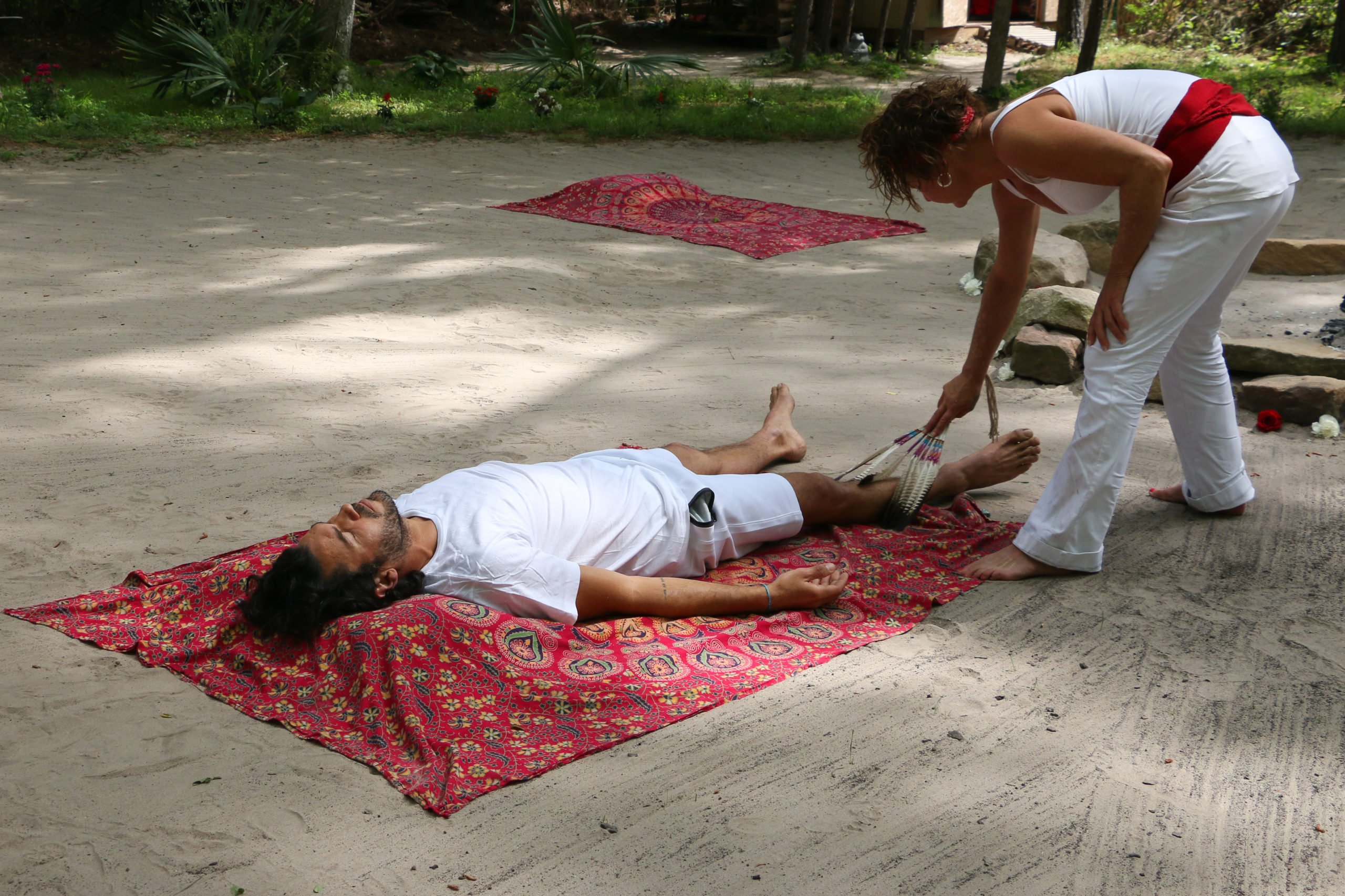
A strange trip
Before attending Tarrer’s bufo ceremony, we’d agreed that I would only report on and not participate in the ritual. But halfway through,Tarrer instructed all the witnesses, including me, to sit in a circle around the fire.
A facilitator walked from person to person with a smaller pipe offering microdoses of bufo. I declined. Tarrer approached me from behind, removed my hat and sunglasses and without asking permission, grabbed my head and hair while blowing bufo smoke into my face and over my body. The acrid smoke smelled putrid, but I felt no effects from the drug.
She wouldn’t let me go back to the edge of the ceremony site where we had agreed I was to observe. Having promised her before that I wouldn’t do anything to disrupt the ceremony, I obliged her requests to stay seated in the sand next to the fire as she continued smoking bufo from the main pipe.
Tarrer stumbled around the fire in a Dionysian stupor.
She took my phone and reporter’s notebook and placed them in various spots around the site. At one point, she placed them a few inches from the fire, and I thought she was going to throw them into the flames.
Dean Sims, clinical director at a substance abuse treatment facility near Houston, was present at the ceremony that day. Sims had taken bufo at previous ceremonies and recommended bufo to some of his clients.
“I’ve never, ever seen anybody take that many hits of bufo,” Sims said of Tarrer. “The last time I’ve seen anybody use like that was at a crack party.”
“I’ve never, ever seen anybody take that many hits of bufo. The last time I’ve seen anybody use like that was at a crack party.”
As some people slowly filed out, Sims sensed that none of the facilitators present were going to intervene in what he saw was a ceremony gone out of control. Tarrer approached Sims and tried to remove his glasses, but Sims held down Tarrer’s arms and physically restrained her near the altar in order for the ceremony to come to a close.
“Never in my life have I had to restrain anybody. It was not comfortable for me, especially since I am not a server. I’m not really a member of the community other than I’ve been there,” Sims said. “It was really an exercise in seeing what it’s like with a charismatic group leader who has so much authority that it’s hard for anybody to step up and tell them they’re wrong.”
A couple of days later, one of the facilitators who served at the ceremony cut off ties from the church. He had just graduated from the training program and was upset about the ceremony’s odd turn.
“USNT is Brooke. Brooke is USNT. I can’t in good faith represent myself under that name,” said Joe, who did not want his last name revealed for fear he could lose his job if his employer discovered his connection to the bufo church.
“There is an unfortunate issue with shamans. I would say I’ve run into a lot more shamans and facilitators that are not good people versus that are good people that are actually trying to help people with the medicine,” said Erin Werner, who defected from the church in March, a month before the ceremony I attended. “I think, like anything where you’re going to find a lot of vulnerable people who are in a very vulnerable state, it’s going to attract people that are going to prey on that.”
Tarrer apologized to me on the phone a few days after the ceremony. “It was the only way I would be able to give you a blessing,” she said. “When you’re giving someone a blessing like that you just have to be a channel for bufo. … You don’t want anyone coming into a bufo space and not having that blessing.”
However, in an email to the Texas Observer several months later, Tarrer denied administering bufo to me saying it is not possible to do so by blowing bufo smoke in my face.
Tarrer was also unrepentant with the members of her own community. She blamed her facilitators’ “energy” for the ceremony going awry and even accused Joe of stealing bufo from her.
“I said, ‘No, Brooke. Joe didn’t steal medicine from you. You smoked it all. We all watched you do it,’” said Madeleine, another facilitator present at the ceremony. She agreed to go on the record under a pseudonym because she doesn’t want her name associated with the church.
“It felt uncomfortable speaking to an outsider about what was going on. I felt like I had to cover for Brooke.”
In the months since the ceremony, several other facilitators have also left the church, including Madeleine.
“It has all of the characteristics of a cult,” Madeleine said. “It felt uncomfortable speaking to an outsider about what was going on. I felt like I had to cover for Brooke.”
In hindsight, Madeleine lamented that she should have caught several warning signs. During a session for the facilitator program, Tarrer needed someone to receive bufo so students could gain experience administering it. Madeleine volunteered. Instead of being taken care of, however, during her trip she hit her head hard on the ground. When she came back down from the trip, she had scratches on her nose and forehead.
“I felt like it was negligence,” she said.
Madeleine left the church for four months, but her steadfast belief in the positive benefits of bufo brought her back into the fold. She has never been paid for the services she provides helping to facilitate ceremonies. In fact, in the year Madeleine has been involved in the Universal Shamans of the New Tomorrow, she has given the church around $20,000.
“I don’t want others to be misled,” Madeleine said.
Four days after the ceremony, Sims was still furious that Tarrer hadn’t called to apologize to him and take ownership of her actions. He wrote a lengthy email to the entire church community, in which he said Tarrer “desecrated the space with her abusive behavior.”
Sims told me he wants nothing to do with the church and will no longer refer his clients there.
“It should have ended with us dancing,” Sims said. “But it did not.”
